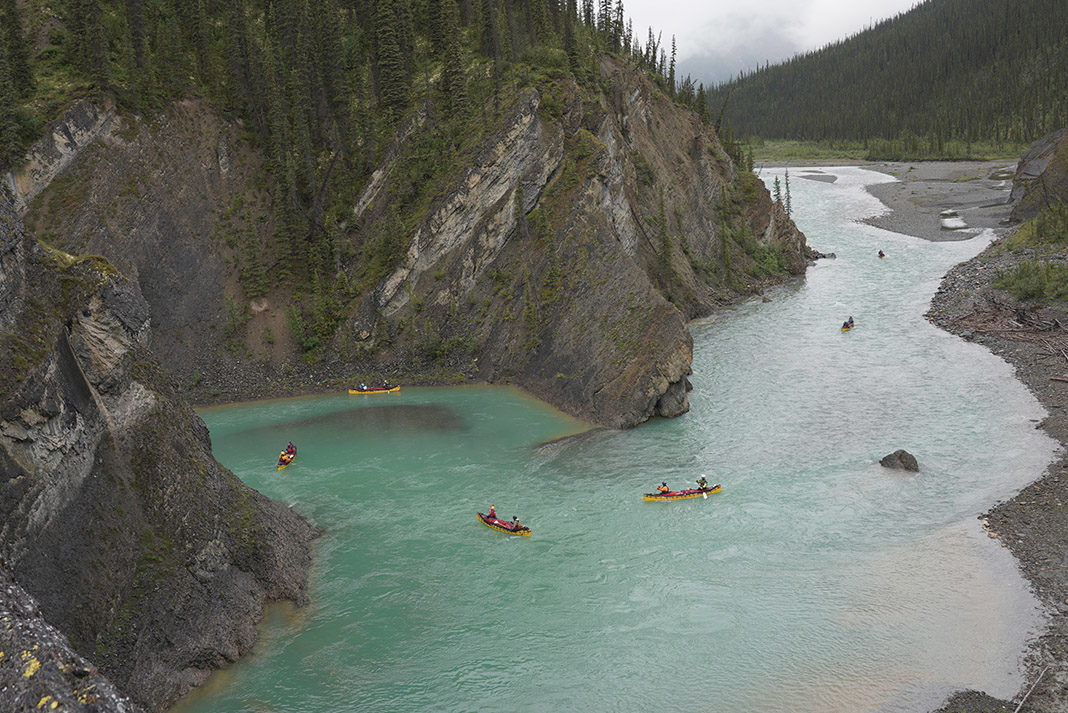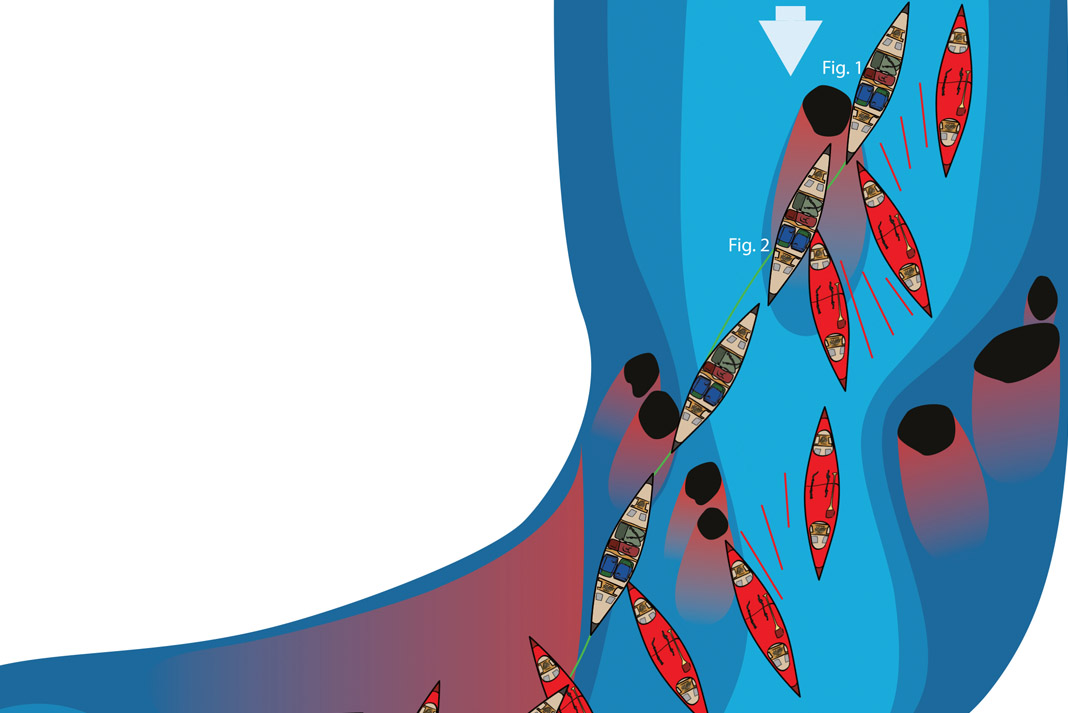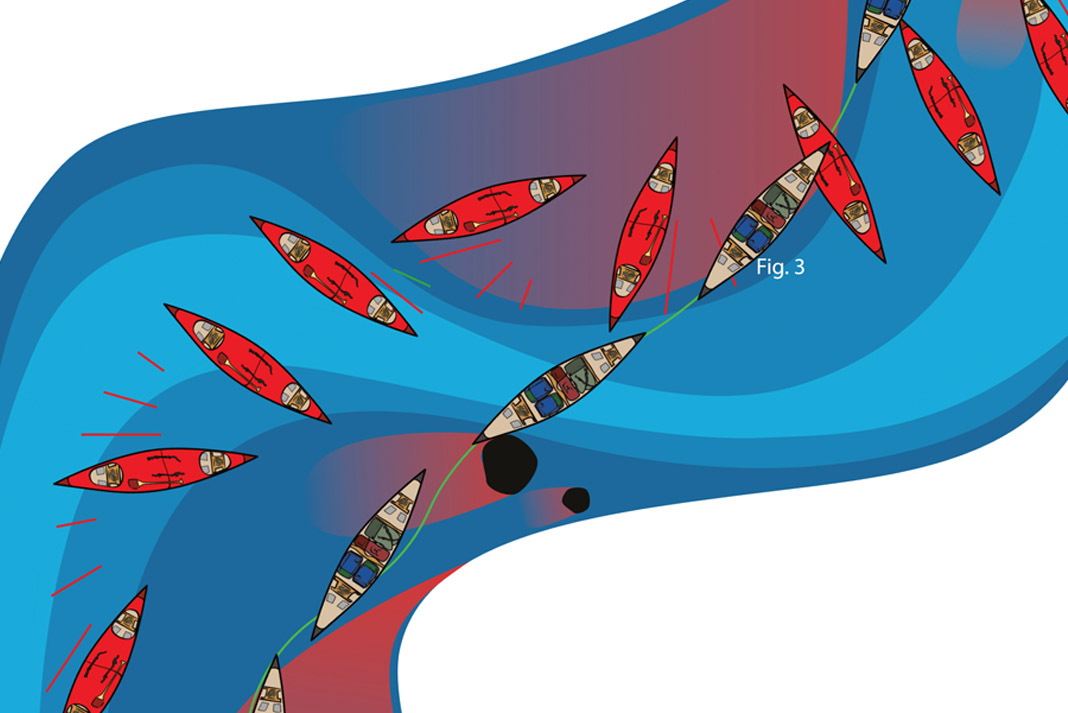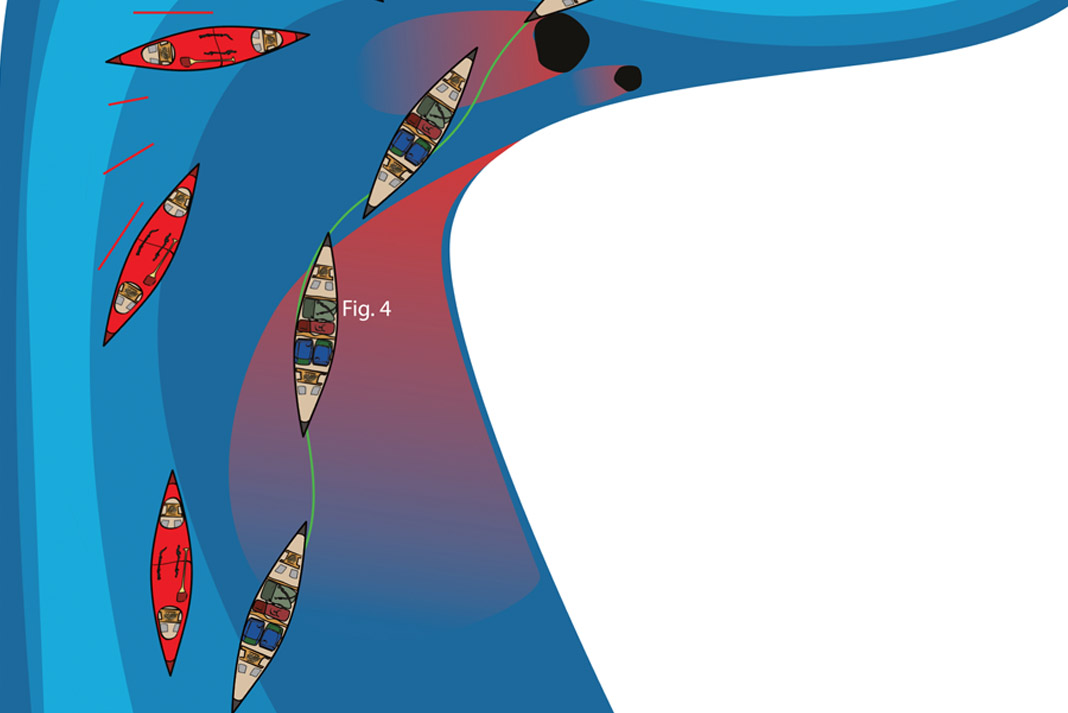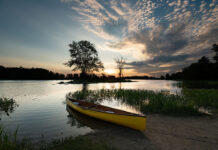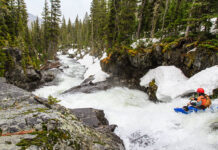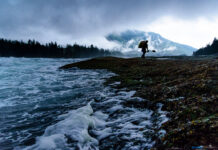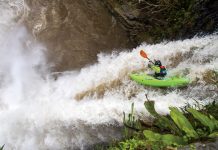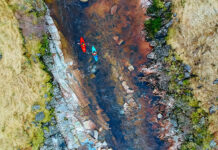I’m always looking for ways to run rapids with less effort. There is a myriad of forces at work in moving water, which means there are many ways to use river features to move downstream with style, finesse and ease.
Keep an open mind when it comes to tampering with established canoeing techniques. A bow paddler with a sore wrist paddling a long day of Class II and III rapids was the inspiration needed for me to explore to what extent I could glide effortlessly down a rapid, rather than back paddling to slow our descent.
Read my tips for canoeing down rapids below.
Whitewater canoe trippers should know the back ferry
This has long been a staple technique of every accomplished whitewater canoe tripper. It is the most controlled way to descend rock-studded rapids. However, it’s not the easiest maneuver to master.
Each time a paddler engages a back ferry near an eddy, the countercurrent of the eddy tries to straighten the canoe, requiring correction strokes to maintain the back ferry angle.
This sometimes leads to blame being cast between paddling partners, often in the form of shouting, “What are you doing? We had the right angle!”
There may be another way.
Use the canoe’s momentum and river currents to glide through a rapid
What would happen if, instead of back ferrying, paddlers used the canoe’s momentum, gravity and various river currents to glide through a rapid?
Gliding carves a sinuous path through a rapid, placing the canoe in
various currents propelling it in the direction you want to go. It requires planning a route several moves ahead and reading the minute details of the currents.
Begin by entering the rapid with slightly more speed than the current. Pass really close by a rock, slightly angled so the actual stem of the canoe is on the eddyline (figure 1).
The canoe should be so close to the rock if you were pointed straight downriver as you passed, the wide midship area of the canoe would hit the rock. Yes, this close. Bow paddlers will find this very disconcerting, and indeed gliding works better if bow paddlers keep their paddles out of the water most of the time.
Bite off just enough eddy current causing your canoe to carve in the direction you want to go.
When the canoe re-enters the current on the other side of the eddy it will regain momentum as it turns downstream (figure 2). Continue to slingshot in the general direction you want to go. The placement of the canoe in figure 3, just nipping the edge of the eddy, will allow you to carry more momentum than the line at figure 4.
Compare the overall route of the gliding canoe versus the back ferrying canoe—the one with the red spray cover. Both work, but one route is straighter and requires less effort than the other.
The true zen moment is when you glide down the rapid using no forward strokes at all. It’s not always possible, but the challenge alone makes it worth trying.
This article was first published in Issue 53 of Paddling Magazine. Subscribe to Paddling Magazine’s print and digital editions here , or browse the archives here.
Paul Mason is a cartoonist, Paddle Canada patron and moving water canoe instructor. He enjoys sharing his latest canoeing revelations through online tutorials, written articles and teaching his own courses.



